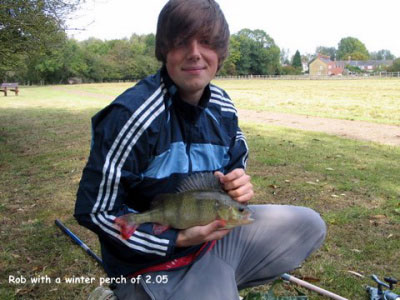Over twenty five years of my life were spent in pursuit of barbel and I would fish for them come rain or shine, frost or flood, virtually anywhere in the country. Whilst barbel fishing I caught big fish of several species including chub to well over six pounds, roach to one pound fourteen ounces, pike to mid teens and similar sized salmon. I don’t believe that I gave any of those fish a second glance because to me they had ‘invaded my barbel space’ and were not very welcome. When I moved to Northampton I had the Great Ouse within twenty minutes from home and it was barbel bliss – at least it was in the summer. In winter it was a different matter, and try as I may, I couldn’t go out and catch barbel with any consistency. It took quite a few years but finally I got fed up with going twenty to thirty trips without a bite.
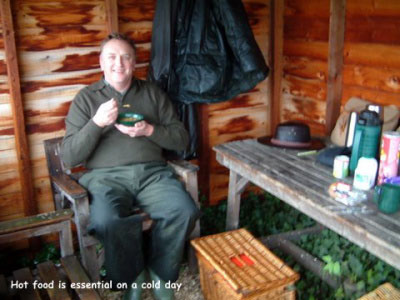 About six or seven years ago I decided to try something different in the winter and I really started to enjoy my fishing again. Grayling were the obvious winter choice as they could be relied upon to feed in even the coldest water temperatures. I had many very happy days catching grayling on the upper Hampshire Avon, the Kennet, the Itchen, the Nadder and my particular favourite, the Test.
About six or seven years ago I decided to try something different in the winter and I really started to enjoy my fishing again. Grayling were the obvious winter choice as they could be relied upon to feed in even the coldest water temperatures. I had many very happy days catching grayling on the upper Hampshire Avon, the Kennet, the Itchen, the Nadder and my particular favourite, the Test.
My outlook on winter fishing has changed completely over the past few years and I now look upon it as a time of real opportunity rather than a period of hardship. It is a time to scale down and trot a float down a lovely glide, or put a small feeder just on the crease.
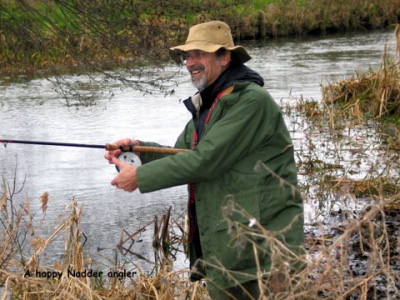 I have equipped myself with the very best winter clothing available and I rarely get cold or wet so my fishing is comfortable, essential if you are going to be able to concentrate for long periods with few bites. If you have read John Bailey’s excellent book ‘Roach, the Gentle Giants’ then you will appreciate what it’s like going thirty three winter evenings without a bite.
I have equipped myself with the very best winter clothing available and I rarely get cold or wet so my fishing is comfortable, essential if you are going to be able to concentrate for long periods with few bites. If you have read John Bailey’s excellent book ‘Roach, the Gentle Giants’ then you will appreciate what it’s like going thirty three winter evenings without a bite.
I have found that in winter I really need to be ‘tuned in’ from the very first cast. Often the first (and sometimes the only) bite of the session will come when most anglers are setting up their landing net or adjusting their chair. I have also found that if I strike and miss a couple of bites, the fish will often stop feeding. I now always get everything completely in place before casting out and fully concentrate from the moment the float or feeder hits the water. This has resulted in many large roach, chub, grayling and dace being landed within the first five minutes of starting.
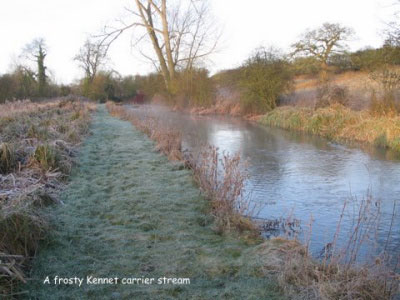 I nearly always take a float rod and a leger rod when I go winter fishing and unless I am after chub, I usually use a 12ft Shimano XXX spliced tip float rod and a Drennan 10ft 6in IM8 Bomb rod. Both of these rods are VERY light and I use a smallish centrepin with the float rod and a small fixed spool reel with the Bomb Rod. Line is usually 3lb 6oz or 2lb 10oz Reflo Powerline straight through.
I nearly always take a float rod and a leger rod when I go winter fishing and unless I am after chub, I usually use a 12ft Shimano XXX spliced tip float rod and a Drennan 10ft 6in IM8 Bomb rod. Both of these rods are VERY light and I use a smallish centrepin with the float rod and a small fixed spool reel with the Bomb Rod. Line is usually 3lb 6oz or 2lb 10oz Reflo Powerline straight through.
I often trot a float with bread or casters until it is too dark to see the float and then I will change over to flake and a small feeder filled with liquidised bread. Floats are usually sticks or small Avons depending on flow although if I am grayling fishing I may use a fat top Avon so I can use plenty of shot to keep the bait near the bottom. A heavier float with more shot at the bottom end also helps with holding back the bait and sometimes grayling will only respond to a bait that is moving slower than the current.
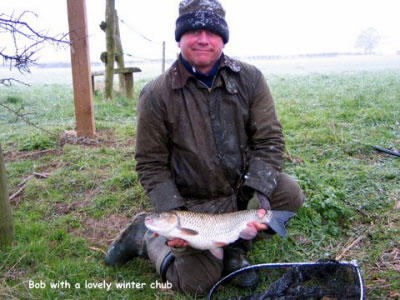 I have found that it really pays to try several different methods during a winter session until I have found the one that works. It is rare that nothing works although a roach session may well turn into a dace or chub session if the roach fail to respond.
I have found that it really pays to try several different methods during a winter session until I have found the one that works. It is rare that nothing works although a roach session may well turn into a dace or chub session if the roach fail to respond.
My winter campaign usually starts in the previous close season and I will walk many miles of river and stream, seeking out suitable swims and stretches that could produce fish of a lifetime. These days I consider as time well spent. As they are usually on the upper reaches of local rivers, fish can be spotted quite easily and location noted for future winter sessions. Of course some stretches are completely weed-choked in the spring and summer, with bankside vegetation making spotting very difficult but it is rarely a major problem. My view is that if you want to catch decent sized fish, you have to put some effort in before the actual session.
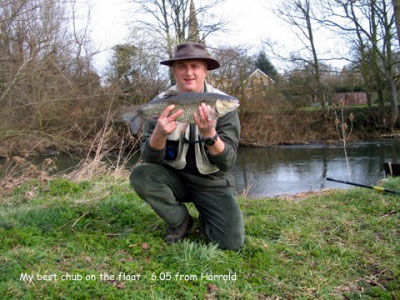 A book that I have read several times is ‘Small Stream Fishing’ by the late, and very great, David Carl Forbes. This book has been a great inspiration to me over the past five or six years and I would recommend it to all. He reminds the angler not to expect too much from small streams and rivers, especially in winter. There are many days when a six ounce dace will bring great joy and a pound perch will keep a smile on the angler’s face for several hours. Just occasionally though, the float will go under or the tip will go round and a dace of over a pound, a roach of over two, a perch of over three or a grayling of over two will grace the net. On a cold winter day, those fish will make the angler feel like he has conquered Everest. I have been lucky enough to have experienced all of those days.
A book that I have read several times is ‘Small Stream Fishing’ by the late, and very great, David Carl Forbes. This book has been a great inspiration to me over the past five or six years and I would recommend it to all. He reminds the angler not to expect too much from small streams and rivers, especially in winter. There are many days when a six ounce dace will bring great joy and a pound perch will keep a smile on the angler’s face for several hours. Just occasionally though, the float will go under or the tip will go round and a dace of over a pound, a roach of over two, a perch of over three or a grayling of over two will grace the net. On a cold winter day, those fish will make the angler feel like he has conquered Everest. I have been lucky enough to have experienced all of those days.
Dave Smith
